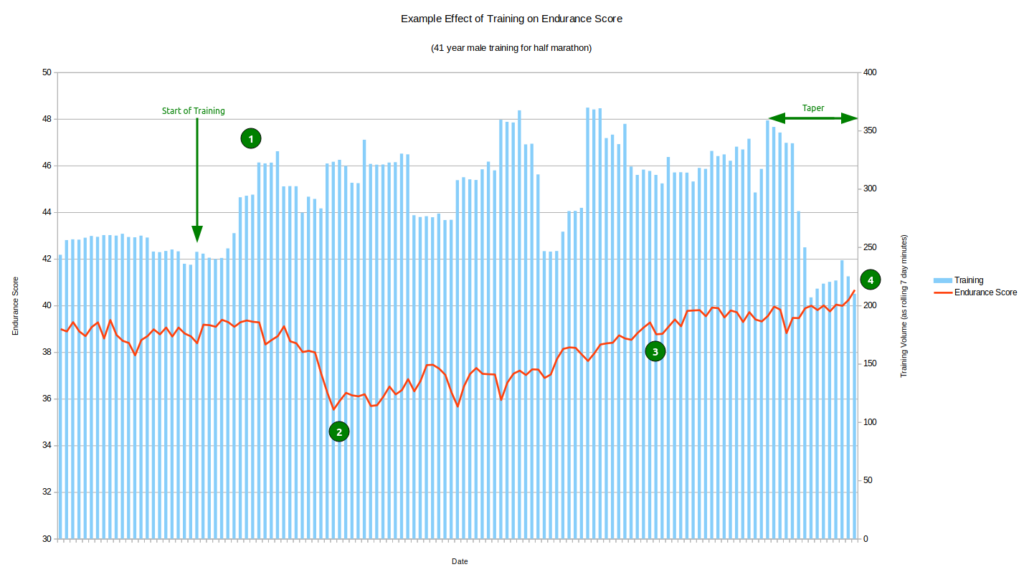There can be a number of reasons why, despite training, your Endurance Score falls.
In athletics, endurance running is considered to be distances of at least 3 km. However, due the popularity of marathon running, TrainAsONE heavily weights the score towards the 26 miles and 385 yard (42.195km) distance.
The first thing to understand is that the Endurance Score is a measure of your endurance capability at the end of the day it is reported. Importantly it is considering all your recent activities, including the day it is calculated. Thus, it is often simpler to think of the Endurance Score as a prediction of your endurance the next day. This is in stark contrast to other types measures that calculate metrics during a run and report some kind of ‘fitness’ on that run.
With the above knowledge it is easier to understand why your Endurance may drop with training, as the score is considering the accumulation of your training volume. In simple terms as you train, you build up a level of underlying fatigue and so your capability for endurance (the next day) drops. In many ways this would be akin to Chronic Training Load (CTL) in the Training Stress Balance (TSB) model (though to be clear the numbers and how they are calculated are complete different).
The additional factor to consider is that your TrainAsONE training plan is not directly designed to promote an improvement in your Endurance Score – it is targeting your goal(s). And whilst these two may at times coincide, they often will not. Furthermore, even when training for an endurance event it may be that a short-term drop in endurance is more appropriate for your overall training towards your goal.
Example: Half Marathon Training
By way of example, the following chart illustrates the effect of a 41 year old already well-trained male training for a half marathon.
When training started, there was an increase in training volume (1). Following a short delay, this resulted in a drop in Endurance Score that reached a trough (2), before slowly and steadily rising again with continued training (3). The Endurance Score then leveled off before rising again just at the end of the taper ready for race day (4).
For interest, this athlete achieved a 10 year best for a half marathon race, and went on to beat this again later in the season.


Comments are closed.